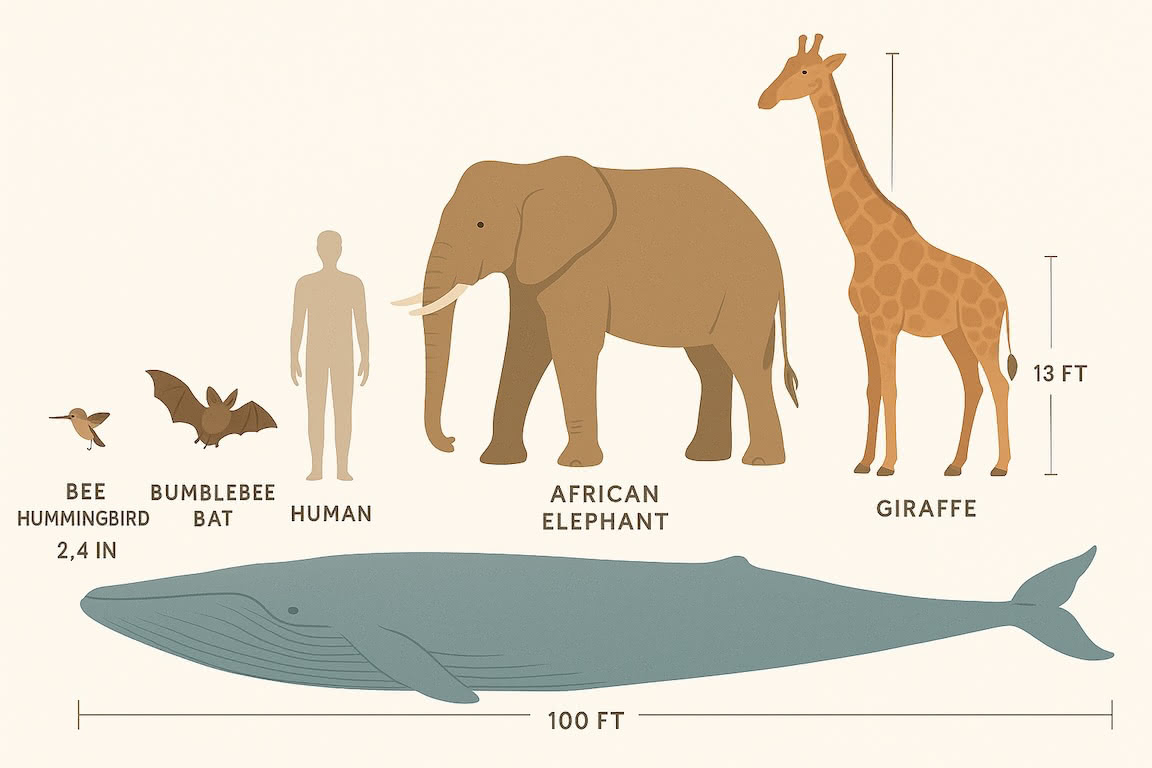Understanding Animal Size Comparisons

Understanding Animal Size Comparisons
Comparing animal sizes helps us better understand the natural world and appreciate the incredible diversity of life on Earth. In this post, we'll explore some fascinating size comparisons and what they can teach us.
The Scale of Nature
Land Giants
- African Elephant: Up to 13 ft (4 m) tall at the shoulder
- Giraffe: Can reach 18 ft (5.5 m) tall
- Blue Whale: The largest animal on Earth, reaching up to 100 ft (30 m) long
Small Wonders
- Bee Hummingbird: The world's smallest bird at just 2.4 in (6.1 cm) long
- Bumblebee Bat: Weighing only 2 grams, it's the world's smallest mammal
Why Size Matters
Understanding animal sizes helps with:
- Conservation Efforts: Knowing the size of endangered species helps in protection planning
- Habitat Requirements: Different sizes require different living spaces and resources
- Evolutionary Biology: Size affects everything from diet to lifespan to reproduction
Fun Size Comparisons
- A blue whale's tongue weighs as much as an elephant
- A hummingbird's heart beats up to 1,260 times per minute
- The ostrich's eye is larger than its brain
How We Measure
Our team uses standardized measurement techniques to ensure accuracy in all our comparisons. We consider:
- Shoulder height (for four-legged animals)
- Total length (snout to tail)
- Wingspan (for birds and flying animals)
- Weight (with clear indications of whether it's average or maximum)
Conclusion
Size is just one fascinating aspect of the animal kingdom, but it's one that helps us understand and appreciate the incredible diversity of life on our planet. Stay tuned for more in-depth looks at specific animal measurements!
You might also like
Cat Years to Human Years: The Ultimate Guide to Your Feline's Age
Curious about your cat's age? Our guide breaks down cat years to human years, explaining the science behind the calculation and what each life stage means for your pet.
🐾 Weird Wheels: The Curious Case of Animal Speed
From sprinting lizards to slothful salamanders, discover the surprising speeds of some of the world’s weirdest animals.